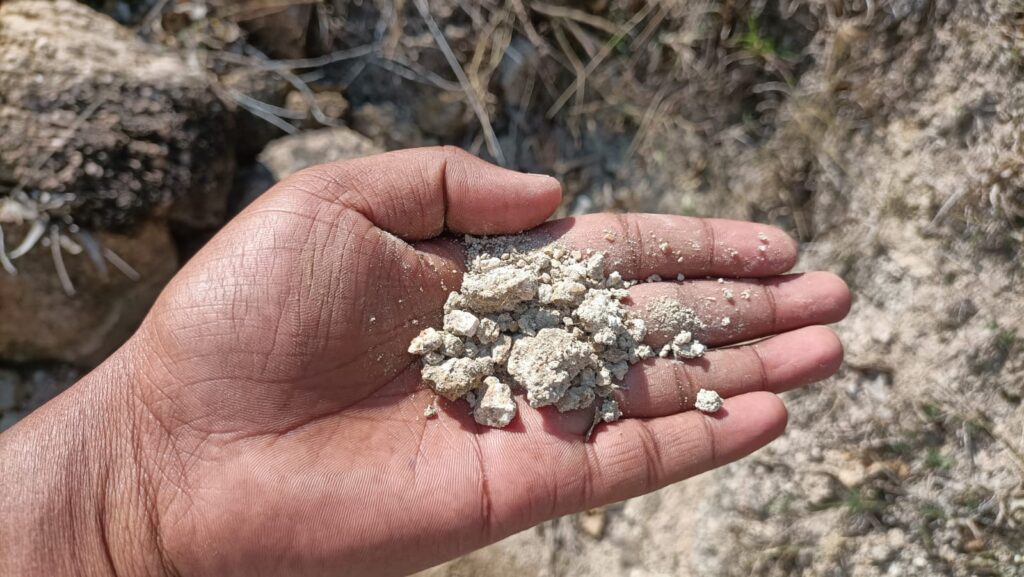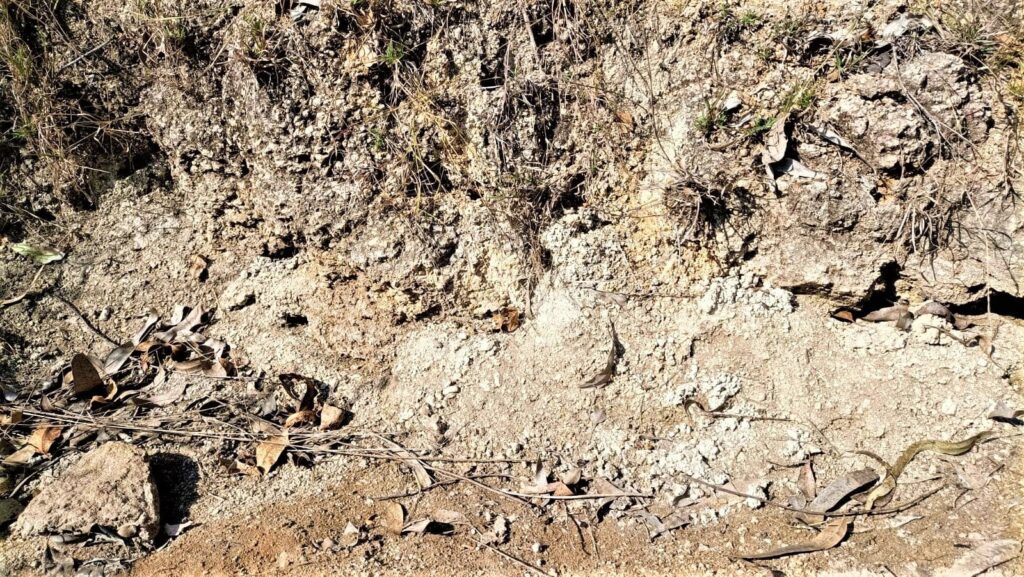Hyderabad:
Ancient mounds of ash released from Toba Volcano of Indonesia were discovered in a Telangana village by the researchers of the Kotha Telangana Charitra Brundam.
These ash heaps were found accidentally near Hastalpur village in Narsapur Mandal, Medak district, by Kotha Telangana Charitra Brundam researcher B.V. Bhadra Girish.

Girish was in fact on a trip to explore pre-historic rock art near Pandavulagutta in Hastalpur village. But locals informed him about the existence of ash pits which are called ‘suddaguttas’ in the outskirts of the village.
At a distance of one kilometer to the south-east of Narasimhaswamigutta an ash bed spread over a radius of about half a kilometer, two feet deep was found.
It is said that the locals used this ash as chalk. However, the presence of prehistoric rock paintings on the mound of the Pandavas at Hastalpur village, the presence of microlithic stone tools in the vicinity and the presence of iron-smelting ingots have previously suggested that the ash came from iron-smelting furnaces.

But the researcher of Kotha Telangana Charitra Brundam who re-examined the ash heaps, collected the ash samples and tested them in the laboratory and found that there was almost no carbon in it and sulfur content of about 5 mg per kg was found.
A close Examination of the particles in the ash under a microscope revealed that the particles had sharp edges as found in volcanic lava ash.
Kotha Telangana Charitra Brundam expert and advisor, Chakilam Venugopala Rao, Deputy Director General (Retd), Geological Survey of India (GSI) examined these details and said that this ash can be confirmed as the ash of the Toba volcano that erupted in Indonesia 75 thousand years ago.
About 75,000 years ago, Toba, a volcano in the Sumatra Islands of Indonesia, erupted and the ash spread over thousands of kilometers.
The ash that fell was washed away by water currents and piled up in some places. In the same way, in some parts of Telangana, the ash piles of the volcano were found to have grazed.
It is noteworthy that the village of Hastalpur is located on the banks of the Haridra which joins the Manjira river. At Murreru near Kottagudem, geologists have already identified such ash piles and also in some parts of Manjira valley.
It is said that the piles of ashes called ‘Merugu Sudda’ in Jwalapuram village near Banaganapalli in AP are also a part of these. Also, he opined that the ash mounds in other parts of Telangana may not be ash mounds formed by burning cattle dung in the prehistoric era as previously thought, and they should be re-examined.
He said that about eighty thousand years ago, the Toba volcano in Indonesia erupted violently and lava ash was found in the Bay of Bengal and other river valleys of the Deccan Plateau in India.